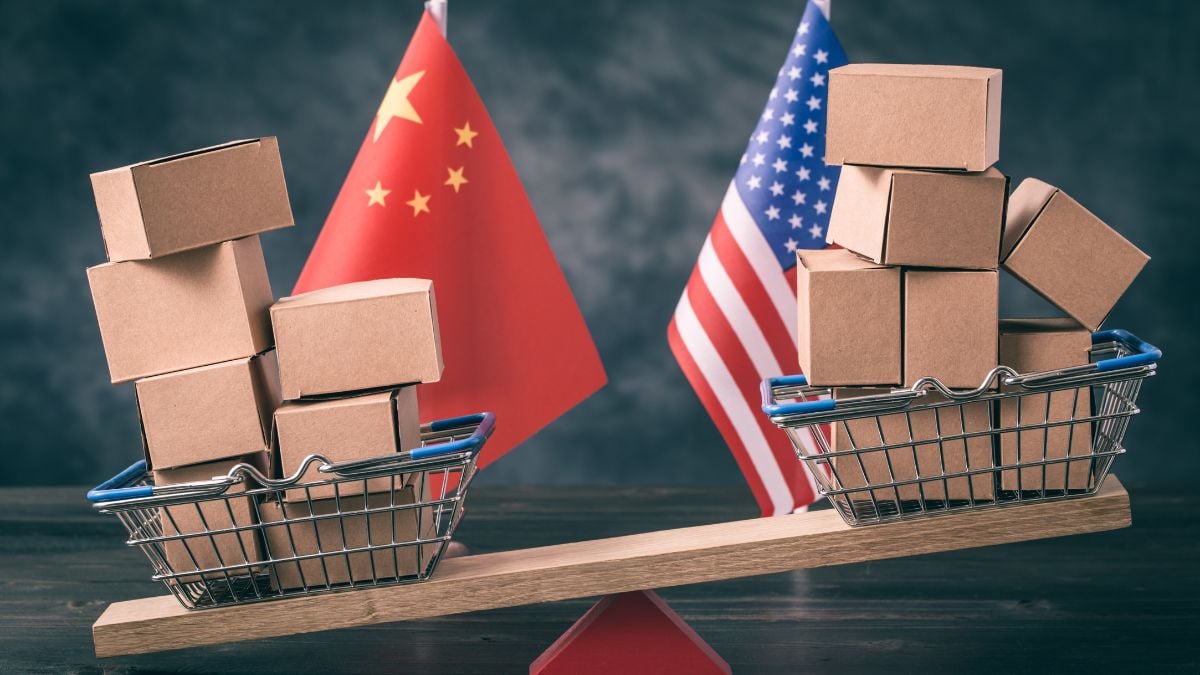
The recent imposition of tariffs on Chinese products by U.S. President Donald Trump has once again triggered a series of retaliations from Beijing: China announced new taxes on key sectors of the U.S. economy—from liquefied natural gas to oil—and launched investigations that could impact corporations like Google.
This episode marks another escalation in the trade relationship between the two powers, which have had similar clashes in the past.
Below, we explain the details of this new tariff war initiated by President Donald Trump, parallel to his announcements of new measures against Mexican and Canadian products.
Why did China announce retaliatory tariffs against the United States?
The trigger for this new escalation was the announcement by U.S. President Donald Trump to impose a 10% tariff on all imports from China. According to the White House, this measure took effect early Tuesday morning as part of an executive order citing trade deficit concerns and Beijing’s alleged lack of commitment to curbing the flow of fentanyl into the United States.
ALSO READ: How did the fentanyl epidemic start? A story of unethical marketing
However, for Beijing, such tariffs “seriously undermine the multilateral cooperation system based on rules” and represent, in their own words, a “serious violation of the rules of the World Trade Organization (WTO).”
Trump’s rationale, at least publicly, is that imposing taxes on Chinese products will pressure Beijing to take strong measures against laboratories and chemical suppliers that manufacture or distribute fentanyl. For the Chinese government, this justification is merely a smokescreen hiding Washington’s true objective: to slow China’s rise in sectors such as advanced manufacturing and high technology.
Which U.S. products will be affected by the new Chinese tariffs?
According to the Chinese Ministry of Commerce, the retaliatory measures include a 15% tariff on coal and liquefied natural gas, as well as a 10% tariff on oil, agricultural machinery, pickup trucks, and certain luxury cars. These actions will take effect next Monday, impacting a wide range of U.S. exports that collectively represent billions of dollars.
- Coal: Traditionally, the U.S. has found an important market for metallurgical and thermal coal in China. The 15% increase could make the product more expensive in the Chinese market and reduce its competitiveness.
- Liquefied Natural Gas (LNG): For several regions in southern China, U.S. LNG was attractive due to its price and reliability. With the tariff hike, Chinese importers may seek alternative suppliers in Australia, Qatar, or Russia.
- Oil: U.S. crude has gained traction in Asia in recent years. A 10% tax makes it harder for U.S. barrels to compete with other sources.
- Agricultural machinery and automobiles: This is a blow to regions Trump considers key to his electoral base, such as the Midwest and the automotive industry. Raising the cost of these exports could impact jobs and the stability of U.S. supply chains.
How did the trade war between the U.S. and China begin?
The current escalation is just the latest chapter in a conflict that has been brewing for years. It is not the first time that the two economic giants have engaged in a tariff war:
- 2018 Trade War: During his first term, Trump imposed a series of punitive tariffs on thousands of Chinese products, arguing that Beijing engaged in unfair practices and stole U.S. intellectual property. China responded with equivalent countermeasures, targeting U.S. agricultural and industrial goods.
- Biden Administration: Upon taking office, Joe Biden did not remove these tariffs. In fact, he expanded restrictions in technology sectors, particularly semiconductors and electric vehicles. Although the rhetoric was less confrontational, trade tensions did not ease.
- Trump’s return to confrontation: Now that Trump has returned to the Oval Office (following his re-election two weeks ago, according to this narrative), he is immediately resuming a hardline stance against China. The new announcement of a 10% tariff on all Chinese imports reopened old wounds and provoked a strong reaction from Beijing.
What is China’s argument before the WTO?
For Beijing, Washington’s move constitutes a serious violation of World Trade Organization (WTO) rules. In its official statement, China asserts:
“The unilateral imposition of tariffs by the U.S. is a serious violation of the rules of the World Trade Organization (WTO). Not only does it fail to solve its own problems, but it also undermines normal cooperation and trade between China and the U.S.”
The Chinese government also warns that these unilateral actions are a clear example of “trade protectionism” and represent a blatant display of “unilateralism.”
Therefore, the Chinese Ministry of Commerce has announced that it will file a formal complaint with the WTO, seeking mediation from the organization to protect its “legitimate rights and interests.” Although, in practice, WTO disputes can take years to resolve, the complaint underscores Beijing’s determination to oppose Trump’s tariff policy within an international legal framework.
China investigates Google and other U.S. companies
Beyond tariffs, Beijing has increased pressure on U.S. companies operating or having interests in China. A clear example is the antitrust investigation against Google, announced by the State Administration for Market Regulation. This agency claims to have evidence that the tech giant is violating competition laws, despite the fact that its main services (such as its search engine, YouTube, and the Play Store) are blocked in China.
This move is seen as an expansion of the battlefield: by investigating Google, Beijing signals that it is not limiting itself to tariff countermeasures but can also restrict or scrutinize U.S. companies in a market as crucial as China.
Tariffs on Canada and Mexico, on hold
In the week before the announcement against China, Trump also threatened to impose tariffs on products from Canada and Mexico, the other two largest U.S. trading partners. However, after intense negotiations, a 30-day truce was agreed upon. During this period, Canada and Mexico must enhance border surveillance and fentanyl control, as requested by the Trump administration.
This pause means that, for now, Mexican and Canadian exports will not face new duties, but the threat remains. For Ottawa and Mexico City, the message is clear: either they address U.S. concerns, or they could join the list of countries targeted by the White House’s tariff policies.








